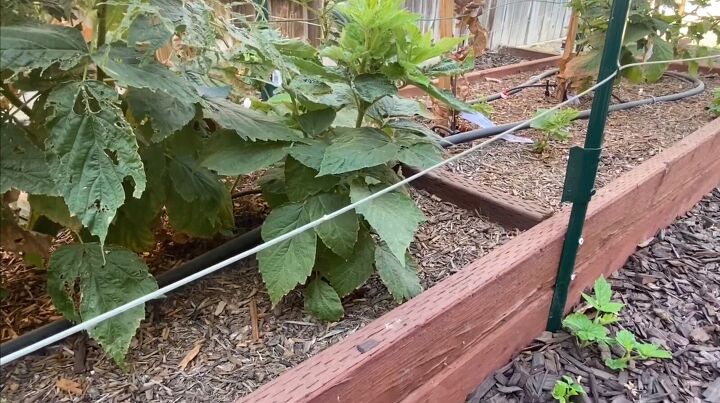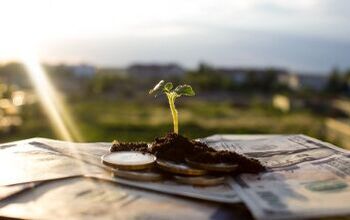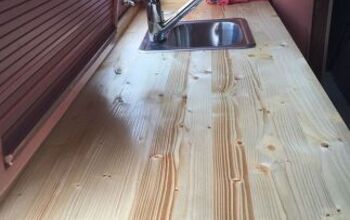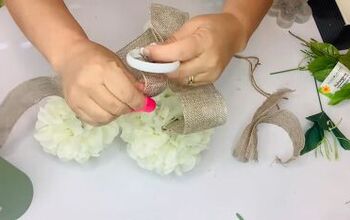How to Grow a Backyard Garden on a Budget

My name is Aimee, and I'm excited to share with you what I'm growing in my backyard garden this season. I am planting for the fall and winter. I want to show you what I'm growing, how I'm growing it, my garden beds, and how we eat from our backyard garden all year long.
Backyard garden costs
I also want to talk to you about the cost of a backyard garden. It is not cheap to start. There are a lot of upfront costs, like building or purchasing garden beds and filling your garden beds with dirt, compost, and garden soil.
There's also an upkeep cost. If you are making compost, it won't cost you anything. We're not doing that right now, so we are purchasing compost for the garden beds. It's worth it to us because the produce we grow in our backyard tastes far better than any other produce you can purchase. The summer garden was a huge success.
Front garden beds
The front two garden beds did not do very well this summer. I was unhappy with them, and it was my fault. It's because I didn't nurture the soil like I should have to make it the best it could be.
We did get a lot of zucchini and a lot of cucumbers. I grew honey nut squash, which was very delicious. They grew tiny, but that's okay.
I knew going into the fall season that I can't ignore nurturing the soil. The soil is everything. We went to a local nursery, bought lots of their compost, and were able to hydrate, nurture, and put great bacteria and nutrients into the soil. So I have high hopes for my fall garden.
We also reworked our sprinkler system. Part of the garden bed was being watered well, but other parts weren't. My husband lined the garden beds with the sprinkler system and put sprayers on. Now every inch of the garden bed is getting water.
Garden journal
In the front two garden beds, I am only growing vegetables that I could directly sow seeds to the ground, so I don't have to start any seeds indoors. I purchased a garden journal from Target. I do not plan on buying a new garden journal every year. This is something that I want to keep year after year with information about what grew successfully here, and whether it is something that we want to grow again.
I drew a diagram for planting now. In the spring, I'll draw it again to decide what I'm planting in these garden beds. I have sugar snap peas just along the edge where the trellis is. They grow so beautifully in the winter with their pretty white flowers. I'm also trying out cowpeas, which are like black-eyed peas, along the trellis.
On the backside, I have dinosaur kale, romaine lettuce, Vivian lettuce, spinach, and fennel. I love fennel. Then on the other side, I have collard greens, blue kale, red cabbage, cauliflower, rainbow chard, and pak choy, which is like bok choy.
Orchard garden beds
The next thing that I wanted to share with you is our orchard garden beds. We call it the orchard because there are some well-established fruit trees at the very back of our backyard. We put three beautiful Vego garden beds back there, and I couldn't be happier. They're beautiful.
In the middle garden bed, we had two tomato plants in a bunch of jalapenos. I will never do that again because the tomato plants overtook all of the jalapenos, and it was hard to get a good harvest from the jalapeño plants this summer.
We had a bountiful tomato harvest of Roma tomatoes and a bountiful harvest of peppers and eggplant. In that center garden bed where the jalapenos were, we are going to now grow all of our carrots and beets for the winter.
These are crops that you continually plant all season long because as you're pulling carrots, you're planting more seeds so you can pull more carrots, and plant more seeds. The same works with beets.
Seed starter kits and seeds
In the outer two square-shaped garden beds, we're doing something a little different. I am going to be planting four different varieties of plants in those garden beds. These are the seeds that I have to start indoors before I can plant them. Celery, kohlrabi, cabbage, and then Sun King broccoli are what we're growing in these trays.
This last year I would go to Lowe's once a week and look through the clearance section for clearance fruit trees. It was so successful for me. I was able to purchase four apple trees, two pear trees, a peach tree, and two apricot trees, all on clearance.
Typically, they cost about $40 a piece for a good-sized, mature tree, and I was able to get all of them between $15 and $20 each.
Another fun little project that we did this year is berries. We have a little berry patch on the side of our house, and it's got two thornless blackberry bushes, two raspberries, and two golden raspberries. I am going to be adding some compost to those garden beds to add lots of nutrients and give them a boost of growth.
Tea garden bed
We have a special little garden bed up near our patio, and we call it the tea garden. I'm going to plant chamomile in that garden bed. We use our mint and lemon balm all the time to make tea.
Herb gardens
Lastly, on the side of the house, we have two herb gardens. The basil is going crazy. We also have delicious lemon thyme. It just smells so much like lemon. It's wonderful.
Backyard garden
So that is the backyard garden update in our city backyard. That's right. You don't have to live on a homestead out in the country to have a big, beautiful garden. You can have a garden of any size that your backyard will allow right here in the city.
What are you growing in your backyard garden? Share your garden plans in the comments below!
























Comments
Join the conversation
It's long but hopefully helpful...
Throughout reading I was thinking, great ideas, but in what part of the country are you? From what I heard in the video I'm guessing Bakersfield, CA. I grew up in New England so any winter crop will require a greenhouse and/ or cold frames and frequently having to dig through snow to get to those.
Now I live in the SW desert and the climate cooks plants in the summer and alternately deep freezes and bathes them in sunlight in the winter with little water all year except during our monsoon season.
Each growing zone has its blessings and challenges. Talk to extension services and local nurseries and gardening clubs for soil challenges and tips and tricks for self sufficiency. Something critical for raised bed gardening is to make sure they are deep enough for the root system of each plant. Healthy roots are essential for success and have to be a consideration right from building the foundation.
A potentially free though short term way you can start raising your garden beds and being able to start with great soil is using tubs and totes, kiddy pools and sandboxes you might have hanging around that are, at absolute minimum, 8" deep for truly shallow rooted plants. For most though, plan for 18-20 inches or preferably deeper. Troughs, and large farm supply containers, while most are not cheap, the troughs are built for the long haul and for those not able to build your own are great long term investments.
It takes a lot of soil to start. Check to see if you have a local spill company that builds soil and sells by the truckload instead of wrestling with bags in your car and spending a lot without necessarily having the microbes and nome built in like natural, "home grown" local soil will have.
At the end of a season collect the seeds to start your next season with reduced investment and participate in seed exchanges to expand your variety.
Plant to encourage and preserve the birds, lady bugs, praying mantises (all pest control), and bees and butterflies (pollinators critical for each plant's lifecycle and production). If you purchase lady bugs and praying mantises, water just before you release them (or release them right after you water) as they come out VERY dehydrated and thirsty. You don't want your investment flying off looking for water elsewhere. Avoid chemicals which will harm beneficial birds and insects and reduce their population.
Make sure you have good drainage. It's critical for root health.
There's so much more like companion planting but talking to local experts and master gardeners at the extension services can help you build right from the beginning for your area and environment, plan your garden and not waste money.
I even have veggie beds in my front yard - that's where I started - which creates not just beautiful but productive landscaping and on the entertainment end, surprises the neighbors. My watermelon vine started many a conversation.
That's just a few ideas to help with success, especially if you are a rank beginner. You can do this too! Happy growing and enjoy the rewards and the knowledge that adding to the green and growing things helps Mother Nature and the environment. 🌻
Lovely! What types of trees do you grow in your orchard? More info on that would be wonderful! Thank you. 😀